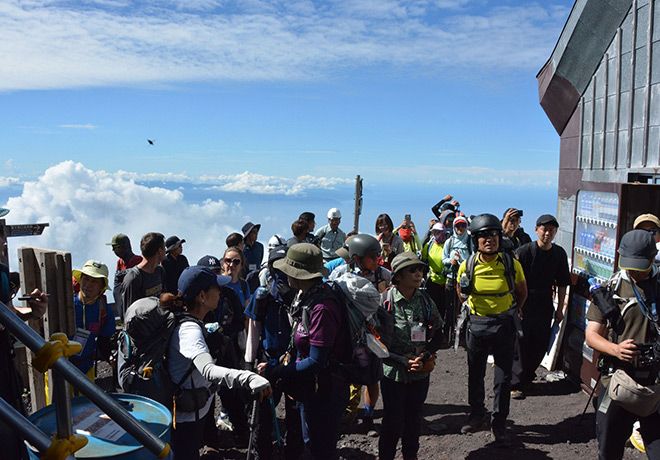John Rutherford Alcock (1809–1897), a British diplomat and writer, served as the first British minister in Japan during the turbulent final years of the Edo Period (1603–1867), as the Tokugawa Shogunate neared its end.
He is also remembered as the first foreign national to climb Mount Fuji.
At the time, pilgrimages to Mount Fuji were a popular form of leisure among ordinary Japanese.
In his book “The Capital of the Tycoon,” Alcock recounts how “Servants and followers of every denomination, under every imaginable pretext,” joined his expedition, turning it into a grand procession.
His party began the ascent from the foot of the mountain in what is now Shizuoka Prefecture and spent the night at a hut halfway up. The next morning, he witnessed the sunrise: “The first rays of the sun lit up the coastline, and in an instant, a single beam swept across the vast surface of the Pacific Ocean.”
There is no doubt that the breathtaking and majestic scenery—unchanged to this day—is what gives Mount Fuji its enduring international appeal.
I recently visited the fifth station of the Fuji Subaru Line, a scenic 30-kilometer toll road that climbs the mountain’s northern slopes from Lake Kawaguchiko to a key staging point for climbers and sightseers.
Situated at an elevation of 2,300 meters on the 3,776-meter peak, the fifth station serves as a popular gateway to the summit.
A young American man who had just descended from the mountain, still awestruck by what he had seen, exclaimed: “It was a fantastic sunrise. I want to recommend it to everyone.”
In recent years, however, Mount Fuji’s soaring popularity has brought with it a number of persistent issues. Some climbers attempt so-called “dangan tozan”—literally “bullet climbing”—a rushed ascent to the summit in a single push without adequate rest or preparation.
Others set out inappropriately dressed for the harsh conditions at higher elevations. As a result, the summit area often becomes severely congested, especially before dawn when many gather to watch the sunrise.
To help manage the flow of climbers, a steel gate was installed this year at the trailhead on the Yamanashi Prefecture side to regulate entry times. On July 10, when the official climbing season began on the Shizuoka Prefecture side, similar restrictions were introduced on the three routes.
The newly introduced 4,000-yen ($27) climbing fee is not insignificant, but it serves as an effective measure to promote awareness and responsibility among climbers. If the system becomes established, Mount Fuji’s appeal as a World Cultural Heritage site is likely to grow even stronger.
During his ascent, Alcock listened intently to the singing of skylarks, sipped hot coffee and took a keen interest in the clothing and religious customs of Japanese pilgrims.
He spent three days and two nights on the mountain—a man whose thoughtful observations prompt reflection on what it truly means to experience and appreciate a mountain.
—The Asahi Shimbun, July 11
* * *
Vox Populi, Vox Dei is a popular daily column that takes up a wide range of topics, including culture, arts and social trends and developments. Written by veteran Asahi Shimbun writers, the column provides useful perspectives on and insights into contemporary Japan and its culture.


AloJapan.com